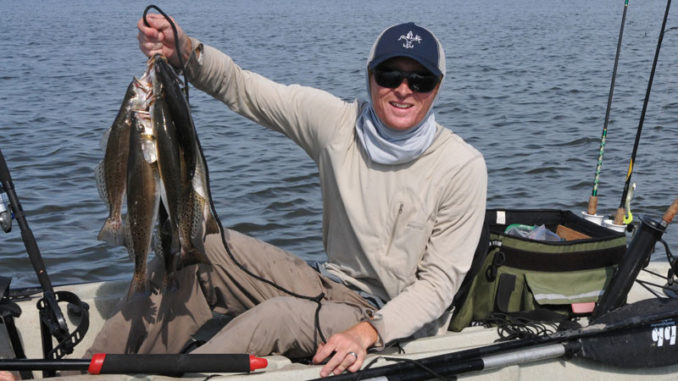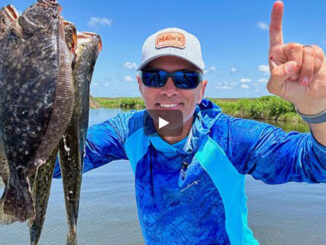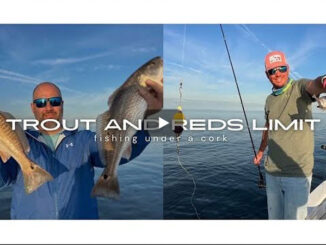
A Notice of Intent (NOI) to modify speckled trout (spotted sea trout) size and bag limits has again been tabled by the Louisiana Wildlife and Fisheries Commission.
The proposed NOI was tabled in a narrow 3-2 vote at the Commission’s regular monthly meeting on Thursday, July 6, that took five hours to complete. The meeting featured many in attendance strongly speaking their concerns before commissioners.
“Hope and a promise”
The proposed NOI will now go back to Louisiana Department of Wildlife and Fisheries (LDWF) officials, so they can calculate zone recommendations instead of a statewide recommendation.
“I’d rather get it right than have something that is just a hope and a promise,” said Commission member Joe McPherson.
The original amended NOI would have established a statewide slot limit with a minimum size of 12 inches and a maximum size of 19 inches with a 15 fish bag limit. The amended NOI would allow two fish over the slot maximum.
The original amended NOI, which was not recommended by LDWF, would have taken 10 years to rebuild the spotted sea trout stock, according to projections.
According to officials, the rebuilding timeline in the NOI allows too much risk for the occurrence of unknown circumstances during that timeframe like continued recruitment issues, effort, freezes, storms, etc.
The amended NOI provides for an overall reduction in female harvest of 16.4 percent (15.4 percent for recreational limits and one percent for elimination of guide limits) and extends the recovery time of the stock to 10 years. LDWF recommendation is still a 20 percent reduction and short recovery period.
“In March or April when we discussed this, I thought we needed some agreeable compromise to pass the legislature, but it also needed to provide for the recovery of the speckled trout in a reasonable timeframe,” McPherson said. “I appreciated this proposal that was developed by this task force.”
Process “illegal?”
But now, an agitated McPherson balked on the way the proposal was developed, claiming the process could have been “illegal.”
“A working group, a bunch of fellas in a closed room, while other fellas were excluded from the room, came up with what is before us today,” McPherson said. “It is not a proposal from the entire commission. Many of us started receiving comments on this proposal before we even sat down and read it.
“Many of you in the audience knew about it before the commission. That really shouldn’t happen. I don’t like it. I don’t think it is the right way to do business. I don’t think it is fair to the public that one or two organizations get behind closed doors with some members, and we call that an informal working group. If we called it a formal working group or task force, it would be illegal.”
McPherson also said there had been a “tremendous amount of misinformation” about the proposal from a local news media source. Some media and conservation groups were more aware of the details of the information to be discussed Thursday than the Commission members.
LDWF officials defended their stance and stated commissioners could look over their data for accuracy. Officials also apologized for the proposal being leaked to the public before commissioners reviewed it.
Fishermen speak up
During the public hearing, dozens in attendance spoke on topics ranging from loss of habitat to quality of water to free-ranging pogey boats.
Brandon Carter, who runs a Venice charter boat, blamed the drop of sea trout numbers on land loss and modifying the size and bag limits could affect tourism dollars.
“We don’t have a speckled trout problem, but we have an attainable speckled trout problem,” Carter said. “We have lost so much land. Some of our interior estuaries are flooded out with river water. We are at the point right now where we are shouldering the blame for everything. My biggest issue is the slot. We don’t have beaches or resorts. Clients are coming to fish, and if you take that away from them they are not coming back.”
Rudy Collins, who fishes the Venice area, called for the different zone recommendations, not statewide regulations.
“The most important thing I see is to have different regulations for different parts of the state. We can easily support a larger slot limit,” Collins said. “This 19 (inches) is really making us throw away a significant number of our catch. It’s not the same fishing Grand Isle or fishing Venice. One size doesn’t fit all.”
Shane Johnson, a charter guide, said LDWF’s data was not accurate. Johnson said the data was a “random draw.”
“Speckled trout are always on the move,” he said. “If I had to go out and base my strategy on a random draw on where I go out and fish, I would be doing something else.”
Red drum limits
Meanwhile, a NOI to modify red drum size and bag limits was passed by commissioners.
The NOI established a slot with a minimum size of 18 inches and maximum size of 24 inches. It also established a bag limit of three fish per person and eliminated the harvest of fish over 27 inches. It also eliminated the bag limit for captain and crew on charter vessels, but allowed them to engage in fishing activity with no retention towards bag limit.
That NOI passed on a narrow 3-2 vote. The original redfish NOI called for a recovery time of 30 years, a point that most in the audience thought was way too long.
“I’m extremely passionate about conversation not only for my business but for future generations,” said Ron Ratcliff. “We need to build a legacy not for us, but the ones that come after us. The large number of people fishing and the bycatch of the commercial fishing are destroying the breeding populations of our prized fish. The regulations being proposed will not rebuild fish stock for 29 years. If we do a little bit more for a 50 percent reduction, we could cut 16 years off the rebuilding.”


